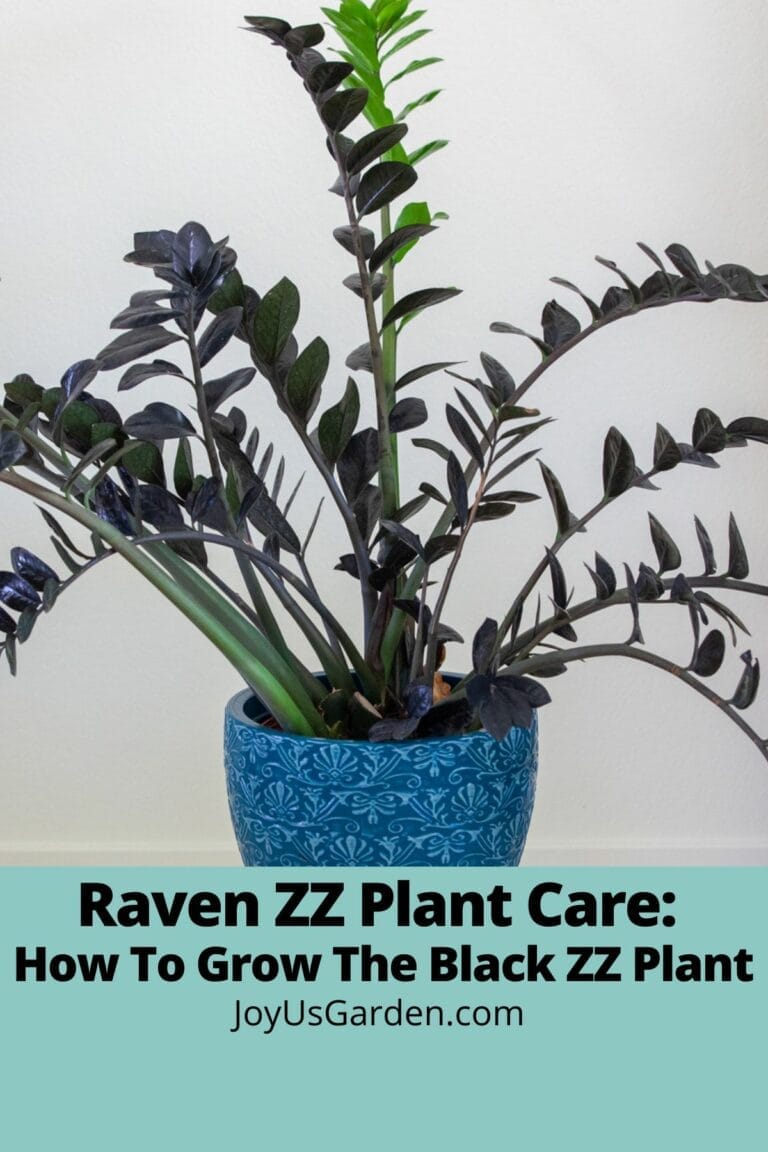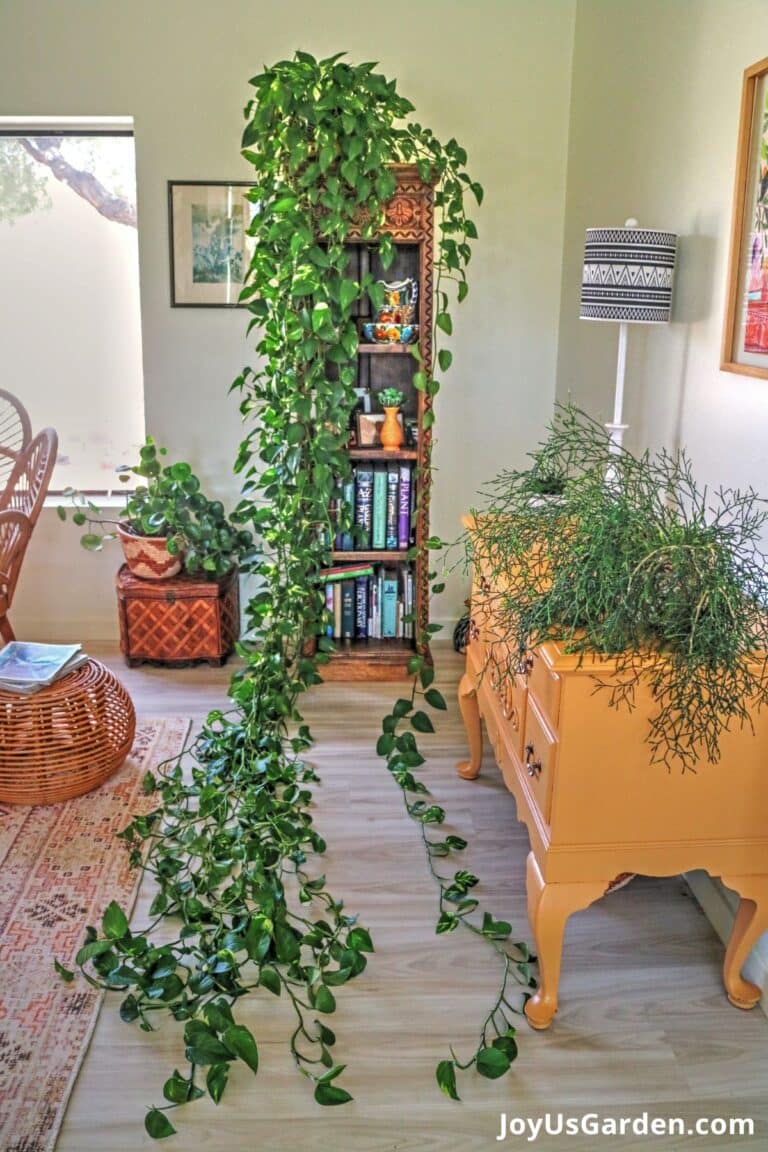Schefflera Amate: A Beautiful “Jurassic Park” Houseplant
If you want an easy, fast-growing plant that really makes a statement, then look no further. Schefflera Amate’s glossy, rich green leaves and impressive size are what make it so popular. Here’s how to care for this bold and beautiful houseplant known simply as Amate, or Umbrella Tree.
When I was an interior plantscaper many years ago, the predecessor (or parent) of this plant was known as Tupidanthus calyptratus, or in common speak, Umbrella Tree and/or Mallet Flower.
These days its name is Schefflera pueckleri and you can find it sold in the exterior trade along with the Schefflera actinophylla. They are very similar. Confusing but both get up to 40′ tall so best to have them growing outside otherwise they’ll take over your living room.
Some Of Our General Houseplant Guides For Your Reference:
- Guide To Watering Indoor Plants
- Beginner’s Guide To Repotting Plants
- 3 Ways To Successfully Fertilize Indoor Plants
- How to Clean Houseplants
- Winter Houseplant Care Guide
- Plant Humidity: How I Increase Humidity For Houseplants
- Buying Houseplants: 14 Tips For Indoor Gardening Newbies
- 11 Pet-Friendly Houseplants
How to Care for Schefflera Amate
The Schefflera Amate was developed from tissue culture and has replaced the above monsters for interiors. Because of the more compact form, it’s much better suited to our indoor worlds. You don’t need to have an atrium to grow it. Think of it as the younger, shorter brother. You can see it up close and personal in the video we shot in the greenhouses where the photos for our houseplant care book were taken.

Here’s the Tupidanthus in the great outdoors here in Santa Barbara. A bit too vigorous for the average home!
Although Scheffleras love humidity, they are quite tolerant of the dry air our homes are notorious for having. The large glossy leaves, which resemble a hand with the fingers spread out, don’t seem to get as many brown tips as the leaves of other houseplants. Both indoors and outdoors, the Amates are great in containers.
See what I mean? These ginormous leaves make a statement.
We did a video for you about these tropical rainforest beauties which you’ll find at the end of this post. Here’s what you need to know about the Schefflera Amate before you buy one and also what you need to do to keep it going strong:
Size
As a houseplant, it generally stays smaller than 10′ tall. This is not a narrow plant so make sure you have the space for it.
Light
Medium. Amates like it nice & bright but no direct, burning sun. They actually tolerate a lower light level than their predecessors the Tupidanthus’. Give them a spin every now & then because like all plants, they grow towards the light.
Watering
Also, like the majority of houseplants, average. They need well-drained soil & their leaves will turn black if overwatered & kept soaking wet. A good drink every 10-14 days should do it. I’m going to do a video & blog post soon about watering houseplants so stay tuned.
Fertilizer
I give most of my houseplants a light application of worm compost with a light layer of compost over that every spring. Easy does it – 1/4 to 1/2? layer of each for a larger sized houseplant. Read about my worm compost/compost feeding right here.
The Amate in the grower’s greenhouse. The leaves will be cleaned off with water to shine them up before being sent out into the world.
Pruning
You can tip prune it twice a year to keep it size in check as it grows. Schefflera Amates can also be pruned hard if need be.
Propagation
By tip cuttings (the green stems) or by air layering.
Pests
Scale, mealy bug & spider mite. The Amates have been bred to be most resistant to mite.
I really like these plants and fortunately for you, they’re pretty easy to find. To learn more about Schefflera Amates and other fabulous houseplants, be sure to check out our book, Keep Your Houseplants Alive. This one will really give your home a tropical rainforest, jungle feel – look out for swinging monkeys!
A hole was cut in the roof so this Schefflera (Tupidanthus) has room to grow. Actually, which came 1st, the plant or the building?
A Schefflera hedge which is not looking its best due to our drought.
Here’s the video shot in a commercial greenhouse:
This post may contain affiliate links, you can read our policies here.
- About the Author
- Latest Posts
Nell, the founder of Joy Us garden, was born into a gardening family and grew up in Connecticut’s countryside. After living in Boston, New York, San Francisco, & Santa Barbara, she now calls the Arizona desert home. She studied horticulture & garden design, working in the field all her life. Nell is a gardener, designer, blogger, Youtube creator, & author. She’s been gardening for a very long time & wants to share what she’s learned with you.










need more info. on how to care for my unbrella tree
H Faye – These plants are relatively easy to care for if you have enough light. Of course they prefer more humidity than our homes provide. The basics you need to know are provided in this post. Nell
I just got one because Ive decided to do just native plants of Florida or tropical weather in my yard. This one was recommended for being native, is that true?
Hi Fernando – The Schefflera are native to to tropical rainforests, mainly the state of Queensland in Australia. I believe the amate is native to there also. Nell
My plant is close to six foot tall almost reaching the ceiling. There are two trees in the pot. Not real bushy. How do I trim it back to make it a little fuller, instead taller. I got it, the plant was 2 foot tall
Hi Doris – Scheffleras respond well to a good pruning & now a great time to do it. Many sure your pruners are clean & sharp. Take the stems down as far as you want (at least a foot or 2) & make diagonal cuts about an inch above a growth node. Hope that helps! Nell
Hi Nell,
We had a really healthy Schefflera a mate but have just returned from holidays and it’s lost half it’s leaves. The younger leaves have pale rounded spots on them and the older ones falling off are soft brown on the tips.
We are in Perth, Western Australia and the plant is kept under the patio but receives plenty of light . It is winter here so temps dip down to on average 10 degrees at night.
I suspect cold and possible overwatering as being the causes of leaf browning but am not sure of the spotted leaves?
Can you suggest possible causes and also remedies??
Much appreciated!
Julie
Hi Julie – Greetings to you in Australia from Arizona! It sounds like damping off (the new growth is especially susceptible to it) which is caused by a fungus. The main cause is too much water especially in times where humidity is on the high side. If this is what it is, just know that Scheffleras are very sensitive to sprays so the best things to do are keep the plant on the drier side (especially in the cooler months) & keep the foliage dry because this is what keeps the disease from manifesting &/or spreading. Hope that helps! Nell
Thanks Nell! Yes that makes sense – I think our lovely neighbours may have loved it a little too much while we were away
HI Julie love the info. Any risks to pets with this beautiful plant?